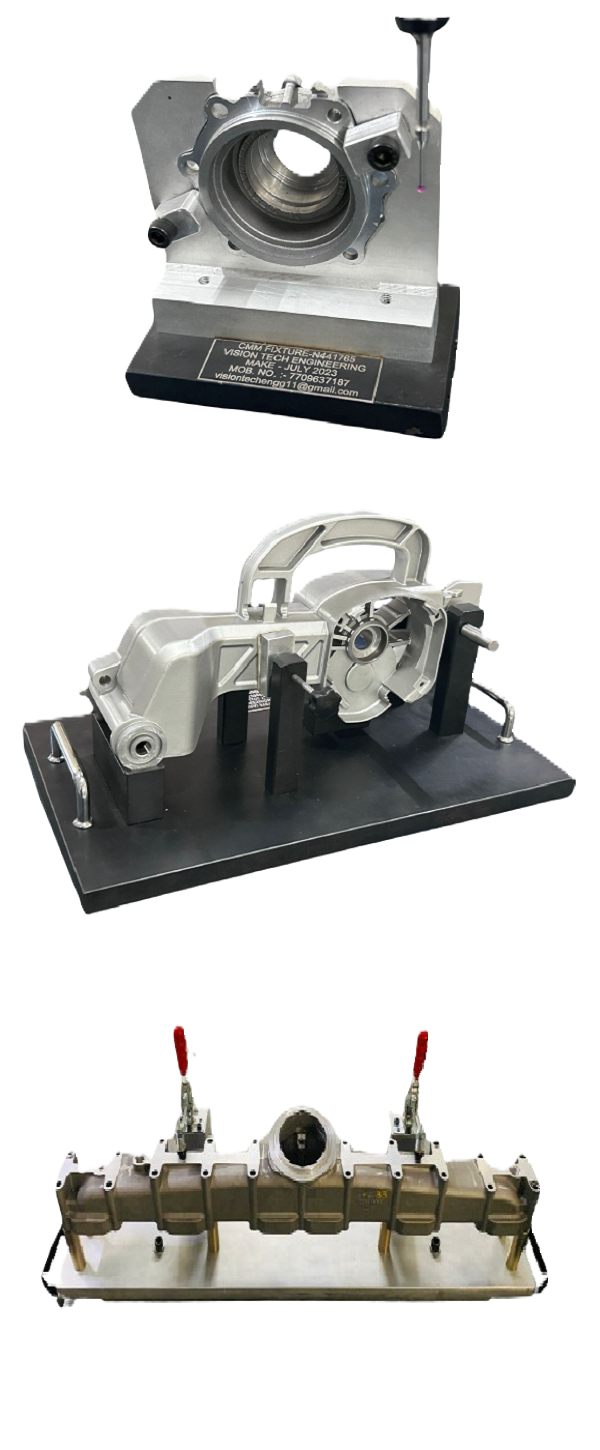A CMM (Coordinate Measuring Machine) holding fixture is a
specialized tool used to securely hold and position parts or
components during measurement with a CMM. Here’s some key
information about CMM holding fixtures:
Purpose and Function
- Secure Positioning:
Holding fixtures are designed to stabilize and precisely position
parts on the CMM’s measuring table. This ensures that measurements
are accurate and repeatable.
- Consistent Orientation:
They maintain
the component in a consistent orientation relative to the CMM’s
probe, which is crucial for achieving reliable measurement data.
- Flexibility:
Fixtures can be customized or designed to accommodate
various shapes, sizes, and types of parts, which makes them
versatile for different applications.
Types of CMM Holding
Fixtures - Custom Fixtures:
Designed specifically for a particular
component or type of measurement. They are tailored to the unique
features of the part being measured.
- Modular Fixtures:
These use
standard components (like clamps, blocks, and plates) that can be
reconfigured for different parts or measurements. This allows for
flexibility and quick adjustments.
- V-Blocks:
Commonly used for
cylindrical parts. The part sits in a V-shaped groove that holds
it securely.
- Magnetic Fixtures:
Use magnets to hold ferrous parts
in place. They offer quick setup and adjustments but are suitable
only for magnetic materials.
- Vacuum Fixtures:
Employ suction to
hold flat or smooth parts. This is ideal for lightweight
components.
Design Considerations - Material:
Fixtures are typically
made from materials like aluminum, steel, or plastic, depending on
the strength and precision required.
- Precision:
The fixture must
be designed to ensure that the part does not move or deform during
measurement, which could lead to inaccuracies.
- Accessibility:
The
design should allow easy access for the CMM probe to reach all
necessary measurement points on the part.
- Ease of Setup:
Fixtures
should be designed for efficient setup and adjustments to minimize
downtime and increase productivity.
Applications - Quality Control:
Used in manufacturing and assembly processes to ensure parts meet
specified dimensions and tolerances.
- Prototyping:
During the
development of new products, fixtures help in verifying dimensions
and design integrity.
- Research and Development:
Used for measuring
and validating new components or technologies.

